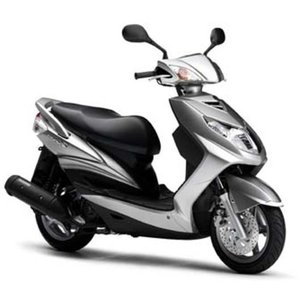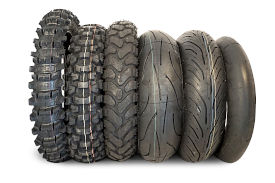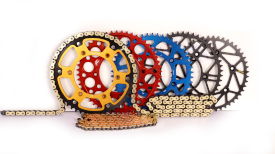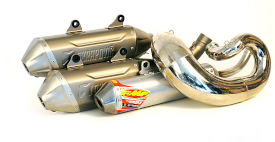Yamaha XC 125 (2007-2016) Review: The Agile Urban Companion
Introduction
The Yamaha XC 125, sold under names like CygnusX, Majesty S, and Vity across its decade-long production run, is a scooter that redefined urban mobility for riders worldwide. Designed as a nimble, fuel-efficient commuter, this model generation carved its niche by blending practicality with Yamaha’s signature reliability. Whether weaving through Bangkok’s traffic or cruising along European cityscapes, the XC 125 became a staple for riders prioritizing simplicity, storage, and frugal operation. After spending a week with a well-maintained 2014 CygnusX variant, here’s why this scooter remains a compelling choice—and how it holds up against its rivals.
Design & Ergonomics: Form Follows Function
The XC 125’s design ethos screams “city slicker.” Its compact dimensions—1,855 mm (73 inches) long and 116 kg (256 lbs) dry weight in the CygnusX trim—make it effortless to maneuver through tight spaces. The stepped dual seat, contoured for rider-passenger comfort, sits at a low 785 mm (30.9 inches), welcoming riders of all heights. Yamaha’s focus on storage shines here: the underseat compartment swallows a full-face helmet, while the Majesty S adds a lockable glovebox for smaller items.
Color options evolved over the years, ranging from understated gun metallic to vibrant red and yellow in the sportier SR variants. The 2016 update introduced sharper LED lighting and a redesigned dashboard with analog speedometers and fuel gauges, keeping the design fresh without straying from its utilitarian roots.
Engine & Performance: Punchy Enough for the Concrete Jungle
At its core lies a 125cc single-cylinder four-stroke engine, tuned differently across sub-models. The CygnusX and Majesty S variants deliver 10.7–11.8 HP, while the Vity trades power for hypermiling, capping at 8.6 HP. During my test ride, the fuel-injected CygnusX engine felt lively off the line, hitting its 9.3 Nm (6.9 ft.lbs) torque peak at 7,500 RPM. Acceleration is brisk for a 125cc, reaching 0–50 km/h (0–31 mph) in 6.2 seconds—enough to dart ahead of cars at traffic lights.
Top speed settles around 90 km/h (56 mph), though the engine buzz becomes pronounced above 70 km/h (43 mph). The Majesty S’s liquid-cooled mill felt smoother at higher revs, but air-cooled variants like the CygnusX never overheated even in stop-and-go traffic. Fuel efficiency is a highlight: expect 40–45 km/l (94–106 mpg) in mixed riding, thanks to Yamaha’s lean-burn injection system.
Handling & Braking: Confidence in Chaos
The XC 125’s chassis is a masterclass in urban agility. The 1,295 mm (51-inch) wheelbase and 12-inch wheels (13-inch on the Majesty S) strike a balance between stability and flickability. Leaning into corners feels intuitive, aided by the 110/70-12 front and 120/70-12 rear tires that grip predictably on wet roads.
Braking systems vary: the CygnusX uses a front disc and rear drum, while the Majesty S upgrades to dual wave discs. Neither setup inspires track-day confidence, but they’re adequate for city speeds. The telescopic fork and rear monoshock absorb potholes competently, though larger bumps can jolt the rider.
Competition: How It Stacks Up
Honda PCX 125
The PCX trades Yamaha’s rugged simplicity for modern flair. Its liquid-cooled engine delivers smoother power, and features like idle-stop boost fuel economy. However, the PCX’s underseat storage is smaller, and its higher price tag alienates budget-conscious buyers.
Suzuki Address 125
Suzuki’s contender undercuts the XC 125 in price and weight (104 kg/229 lbs), but its carbureted engine feels outdated next to Yamaha’s FI systems. The Address also lacks the Yamaha’s storage options, making it less practical for daily errands.
Verdict: The XC 125 strikes a middle ground—reliable, spacious, and just tech-savvy enough to stay relevant.
Maintenance: Keeping Your XC 125 in Prime Shape
Ownership costs are where the XC 125 truly shines. The air-cooled engine’s simplicity means fewer parts to fail, and Yamaha’s 10,000-km (6,200-mile) service intervals keep garage visits minimal. Key maintenance tips:
- Oil Changes: Use SAE 10W-30 (1.0L capacity) every 3,000 km (1,864 miles).
- Belt Drive: Inspect the V-belt every 12,000 km (7,456 miles); replace if cracked.
- Valve Adjustments: Check clearance every 8,000 km (4,970 miles)—0.08–0.12 mm intake, 0.13–0.17 mm exhaust.
- Tire Pressure: Maintain 1.75 bar (25 psi) front, 2.50 bar (36 psi) rear for optimal grip and longevity.
For DIY enthusiasts, MOTOPARTS.store stocks OEM-spec parts like NGK CR7E spark plugs and DOT 4 brake fluid. The scooter’s accessible design makes tasks like oil changes a 30-minute affair.
Conclusion: Timeless Urban Workhorse
The Yamaha XC 125 isn’t about cutting-edge tech or adrenaline-pumping speed. It’s about getting you to work, the café, or that weekend getaway—reliably, efficiently, and with zero fuss. A decade after its debut, it remains a benchmark for urban scooters, proving that sometimes, simplicity is the ultimate sophistication.
Whether you’re refreshing an older CygnusX or personalizing a Majesty S, MOTOPARTS.store has the upgrades to keep your XC 125 running—and looking—like new. From performance air filters to sleek rear racks, your urban companion deserves the best.
Specifications sheet
| Silnik | |
|---|---|
| Udar: | Four-stroke |
| Maksymalna moc: | 8 kW | 11.0 hp |
| Maksymalny moment obrotowy: | 12 Nm |
| Układ paliwowy: | Fuel Injection |
| Maksymalna moc @: | 7500 rpm |
| Wyporność: | 125 ccm |
| Kontrola paliwa: | SOHC (CygnusX/Vity) / DOHC (Majesty S) |
| Maksymalny moment obrotowy @: | 7000 rpm |
| Średnica x skok: | 52.4 x 57.9 mm (2.1 x 2.3 in) |
| Konfiguracja: | Single |
| Układ chłodzenia: | Air (CygnusX/Vity) / Liquid (Majesty S) |
| Stopień sprężania: | 11.0:1 |
| Liczba cylindrów: | 1 |
| Zawory na cylinder: | 4 |
| Wymiary | |
|---|---|
| Rozstaw osi: | 1295 mm (51.0 in) (CygnusX) / 1405 mm (55.3 in) (Majesty S) |
| Waga w stanie suchym: | 116 |
| Masa na mokro: | 148 |
| Wysokość siedziska: | 785 mm (30.9 in) adjustable |
| Prześwit: | 113 mm (4.4 in) (CygnusX) / 93 mm (3.7 in) (Majesty S) |
| Pojemność zbiornika paliwa: | 7.4 L (2.0 US gal) (CygnusX) / 14.0 L (3.7 US gal) (Majesty S) |
| Układ napędowy | |
|---|---|
| Napęd końcowy: | belt |
| Skrzynia biegów: | Automatic V-belt |
| Konserwacja | |
|---|---|
| Olej silnikowy: | 10W30 |
| Płyn hamulcowy: | DOT 4 |
| Świece zapłonowe: | NGK CR7E or NGK CR7EIX |
| Odstęp między świecami zapłonowymi: | 0.6 |
| Pojemność oleju widelca: | 0.16 |
| Pojemność oleju silnikowego: | 1.0 |
| Ciśnienie w oponach (tył): | 1.75 bar (25 psi) / 2.5 bar (36 psi) loaded |
| Ciśnienie w oponach (przód): | 1.75 bar (25 psi) / 2.0 bar (29 psi) loaded |
| Częstotliwość wymiany oleju silnikowego: | Every 5000 km or 2 years |
| Olej do przekładni głównej (Majesty S): | 130 ml 85W-140 GL-5 |
| Luz zaworowy (dolot, zimny): | 0.08–0.12 mm |
| Luz zaworowy (wydech, zimny): | 0.13–0.17 mm |
| Dodatkowe funkcje | |
|---|---|
| Przechowywanie: | Lockable underseat storage (full-size helmet capacity) |
| Gwarancja: | 1 Year Limited Factory Warranty (Majesty S) |
| Przyrządy: | Analog speedometer with fuel gauge |
| Podwozie i zawieszenie | |
|---|---|
| Tylna opona: | 120/70-12 (cygnusx) / 130/70-13 (majesty s) |
| Opona przednia: | 110/70-12 (cygnusx) / 120/70-13 (majesty s) |
| Hamulce tylne: | Drum brake (CygnusX/Vity) / Single disc (Majesty S) |
| Hamulce przednie: | Single disc (Wave disc on Majesty S) |
| Tylne zawieszenie: | Unit swing / Monoshock, 93-96 mm (3.7-3.8 in) travel |
| Przednie zawieszenie: | Telescopic fork, 78-80 mm (3.1-3.1 in) travel |



















